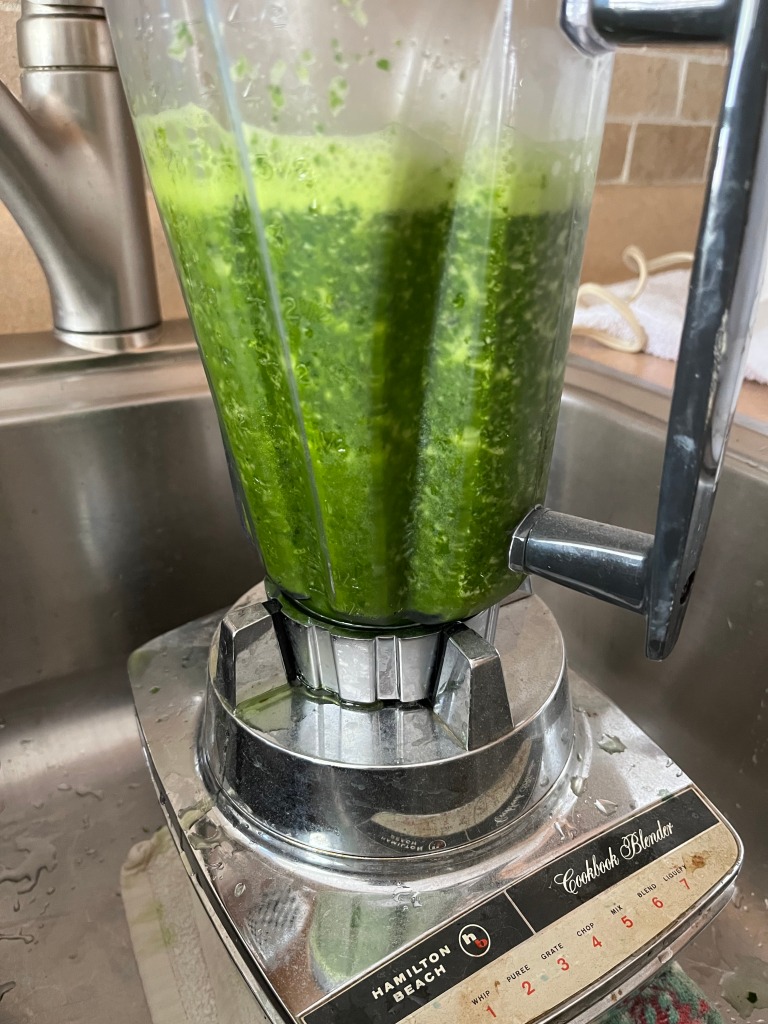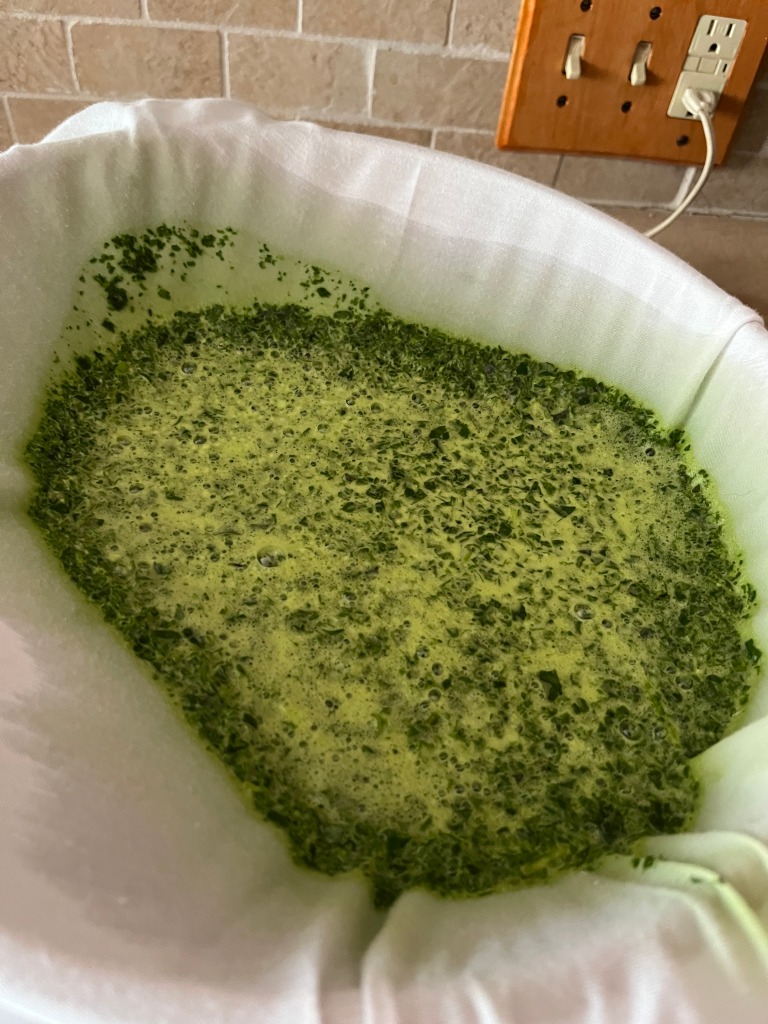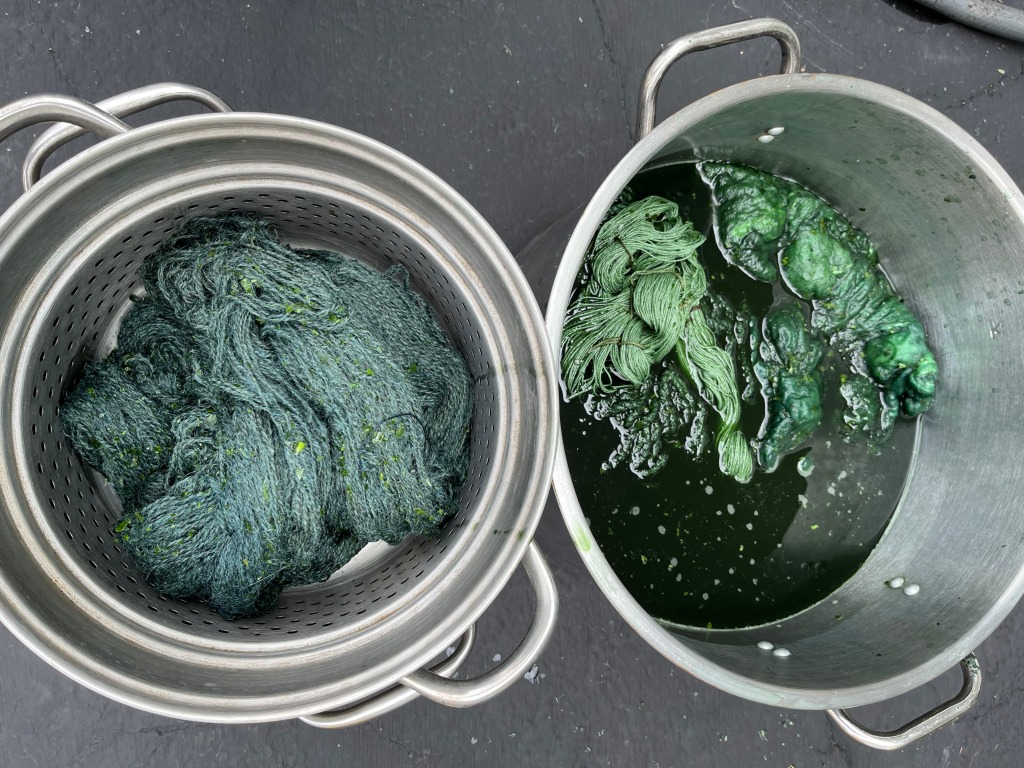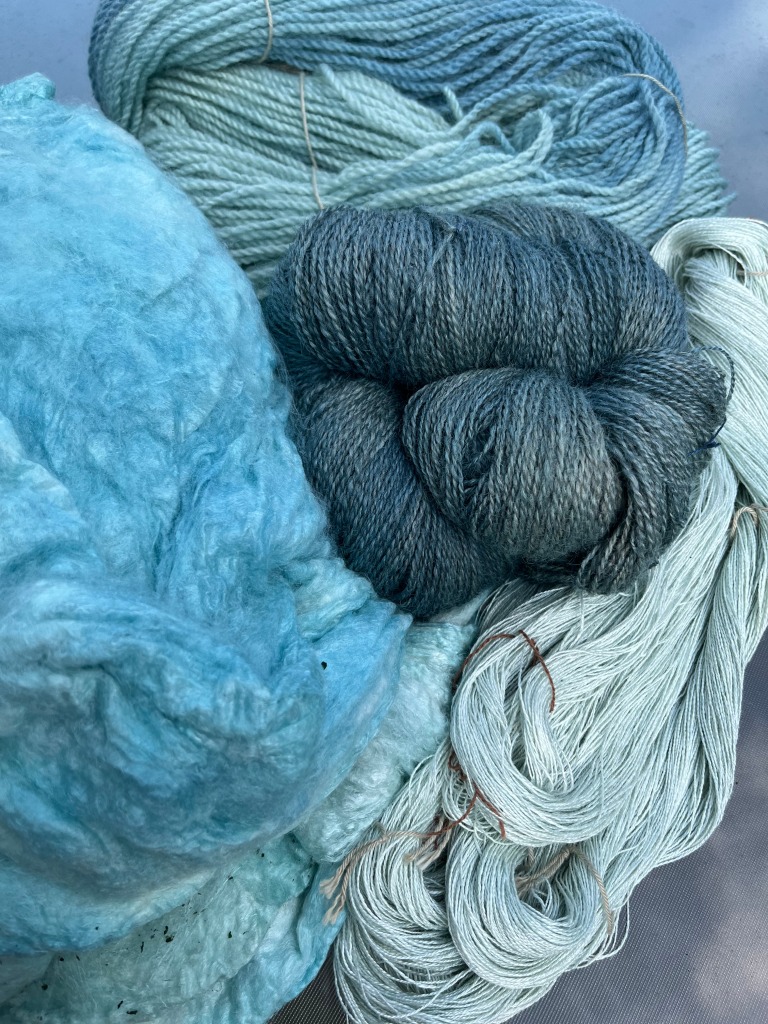(Persicaria tinctoria)
Sally Vourlojianis
Growing
It all started in May when a friend gifted me some Japanese indigo seedlings at Maryland Sheep and Wool Festival. Since then I’ve spent weeks fertilizing and watering the plants in (almost) full sun in large pots. While I don’t know if rabbits eat indigo, with our large population the pots were safer.
Indigo is a perennial in warmer climates but an annual in NE Ohio. I hope to harvest seeds by fall. Seeds are viable for about a year or longer if frozen. Indigo can yield 2-3 harvests a season. Trimming the stems will allow the indigo to produce more leaves.
Dyeing
Dyeing with fresh leaves is different than creating a reduced vat. While it’s magical to watch the green fibers evolve into beautiful deep blues when exposed to oxygen, dyeing with fresh leaves is a different process. Fresh leaf dyeing can produce blue, pink, lavender, green and yellow.
My first harvest in early August yielded 39 ounces which was used to dye 20 ounces of fiber. A minimum of twice the weight of leaves to fiber is recommended. I dyed 4 oz linen lace weight yarn, 4 oz wool yarn, 4 oz silk caps and 8 oz BFL from Sharon O’Donnell’s BFL sheep. The fresh leaf process works best on protein fibers so the linen dyed a very pale blue. Leaves should be harvested early in the morning to avoid full sun and used soon after stripping from the stems.
I put the leaves in a blender with cold water to make a “slushy” and poured this concoction into a cloth (old sheet) which was draped over a large pot. One by one with batches of “slushies” I added fibers and let them soak about 15 min. The dye strikes rather quickly so there is no need to soak overnight.
I enjoyed dyeing with wild abandon and made no attempt to achieve uniform coloring and liked the mottled look. Thanks to a mishap with a corner of one sheet, I dyed myself and multiple kitchen surfaces so my fibers have many pulverized pieces of indigo. With multiple rinses and drying/shaking out, much of the fiber is “clean.” The kitchen is another matter. The leftover leaves and liquid can be dumped into the garden.






Things to consider for next summer.
- Plan my first harvest for mid-July.
- The friend who gifted me the indigo seedlings showed me how to scour fiber prior to dyeing. I’ve participated in group dye events and never remember scouring fiber.
- While additional colors can be produced, think I’ll stick with the lovely blues.
- On the day prior to dyeing, I will harvest the leaves much earlier in the day. Leaves can be refrigerated submerged in water the day prior to dyeing.
- A mesh strainer will support the cloth that holds the “slushy.”
- Now that I’m familiar with the process, will move my dyeing to the back patio.
- Soy milk can be used as an aid in the dyeing process. Will need to research the details.
Conclusion
I wish to thank Katherine Montgomery for initiating this adventure with seedlings and offering assistance along the way.
I’m certainly no expert in dyeing so to fill in the gaps, the resources listed provide a wealth of knowledge. There are plenty more resources and the more I read, I find that others grow, harvest and dye differently than I did. So please don’t consider my experience to be a cookbook recipe.
Resources
John Marshall. Soulful Dyeing for All Eternity. Singing the Blues. 2018, 2021 – Comprehensive growing and dyeing with Japanese indigo.
Eileen Hallman. A Primary Palette from Fresh-Leaf Japanese Indigo. Spin-Off. Spring 2022
Heat and/or multiple mordants are suggested to create various colors
www.maiwa.com – All about natural dyes and supplies.
Anna Carolyn Meier, Fresh Leaf Indigo Tutorial – Blog post and video, Lists 3 ways to process fresh leaf indigo
The Dogwood Dyer, Fresh Leaf Indigo Experiments – Blogger shares her experience with John Marshall



















You must be logged in to post a comment.